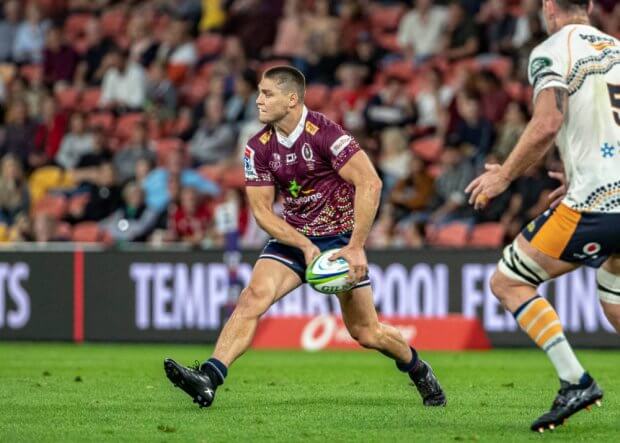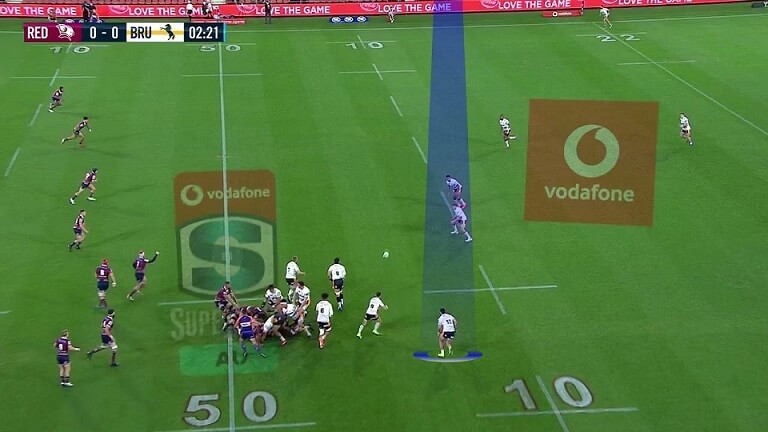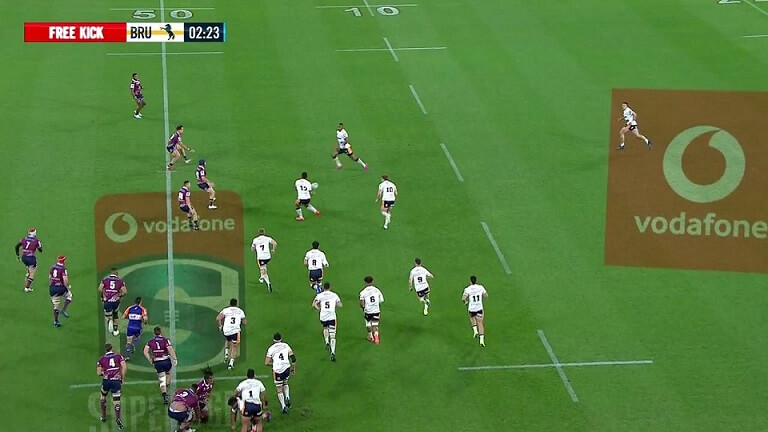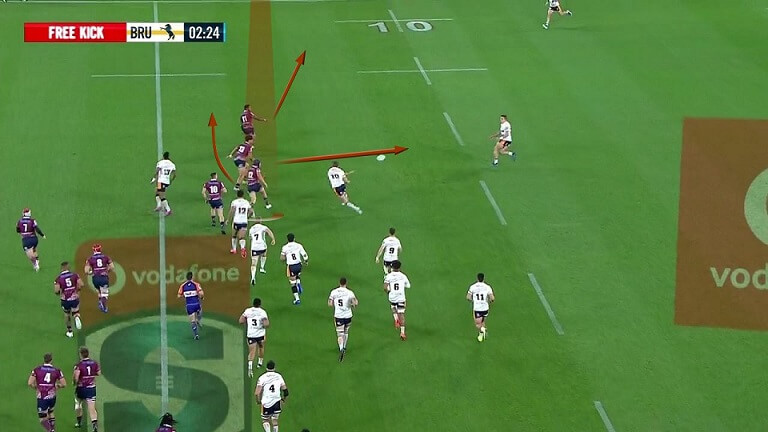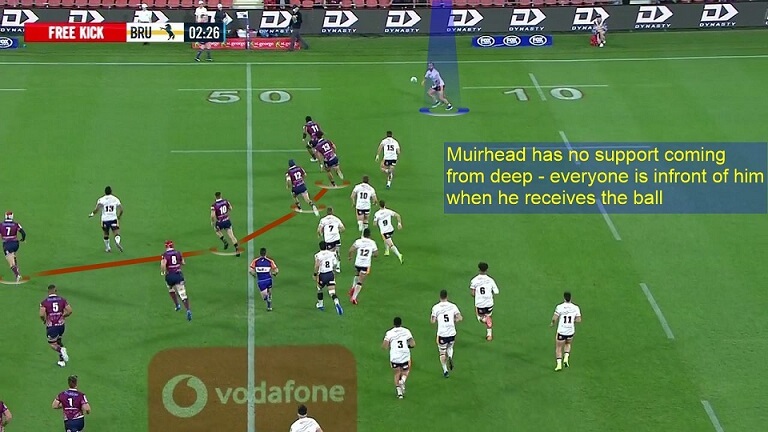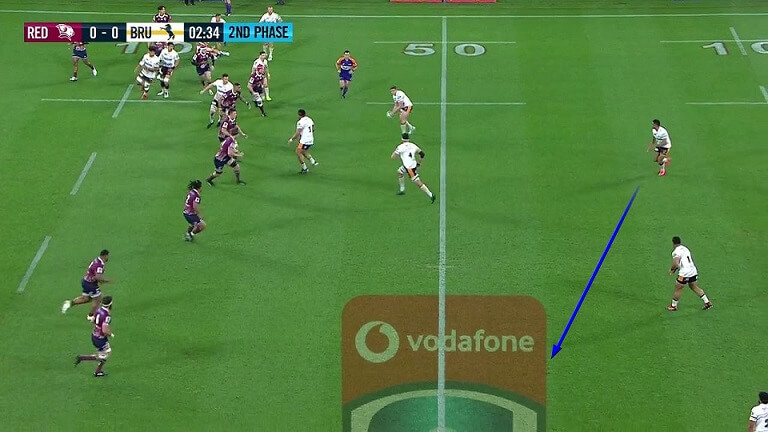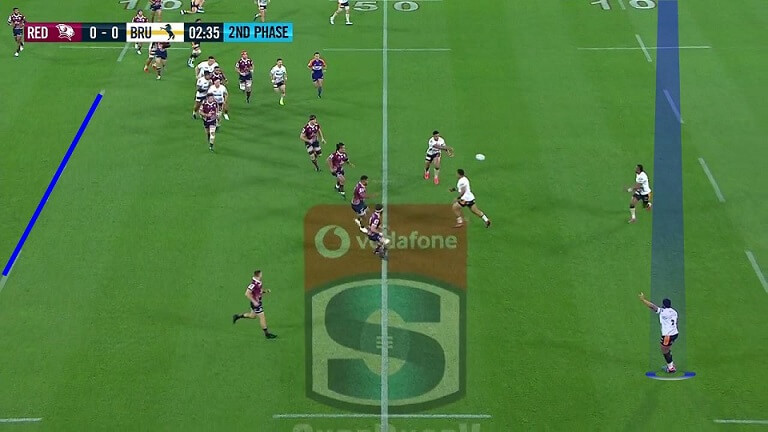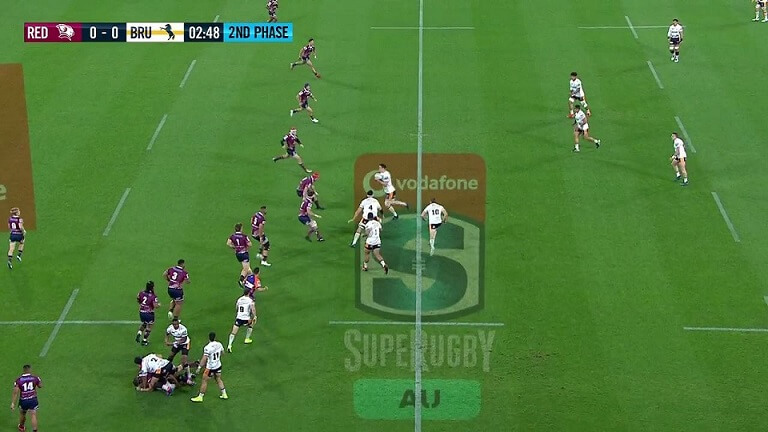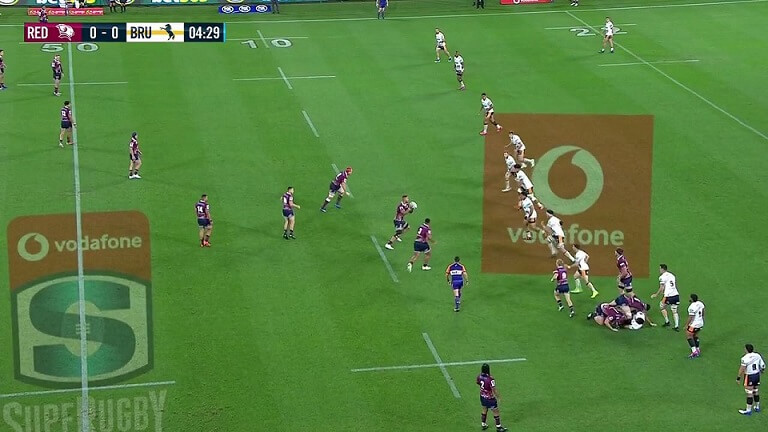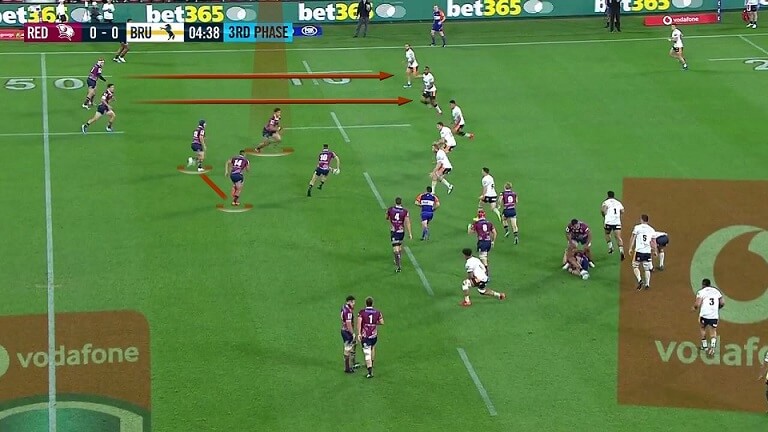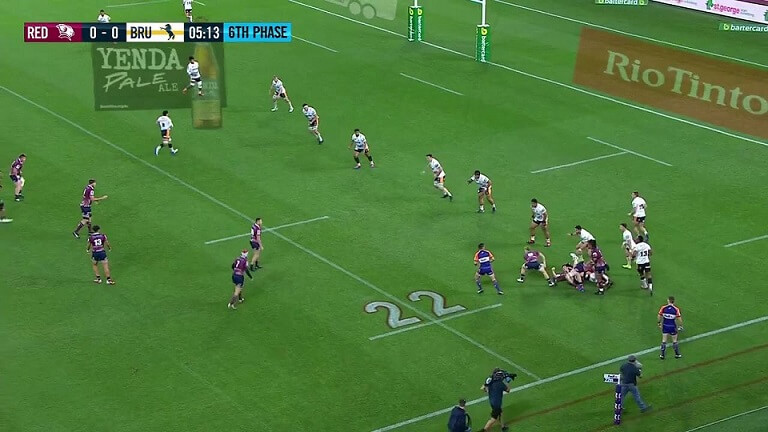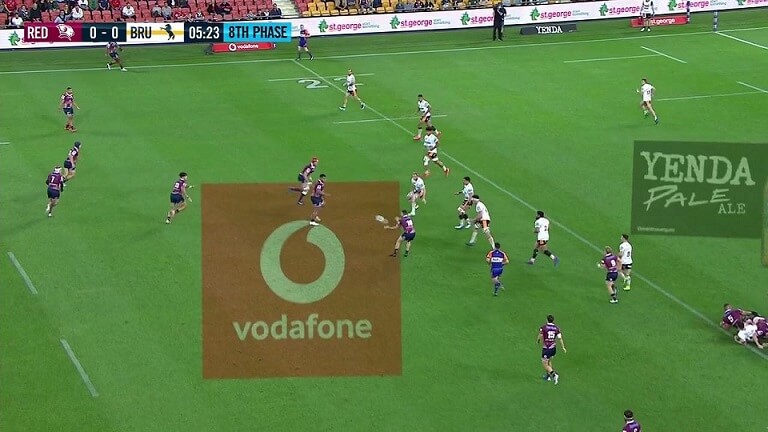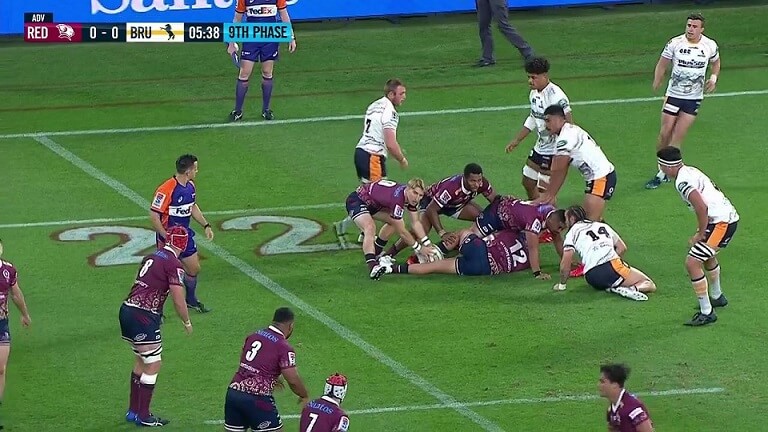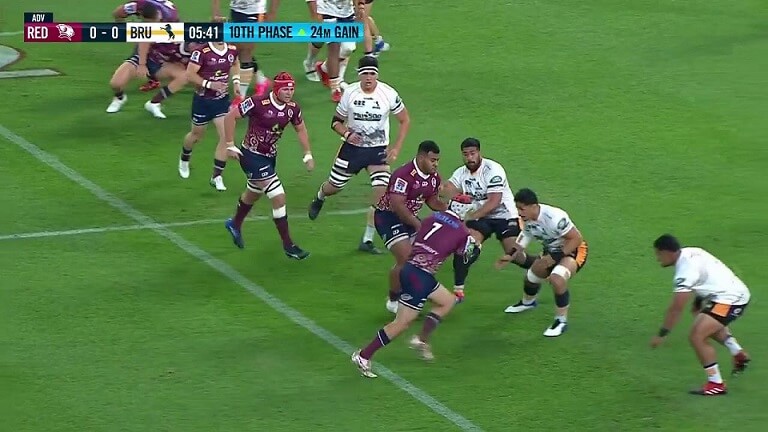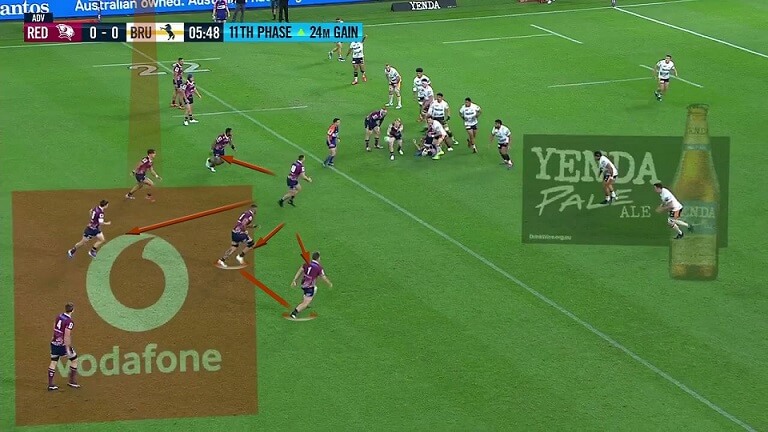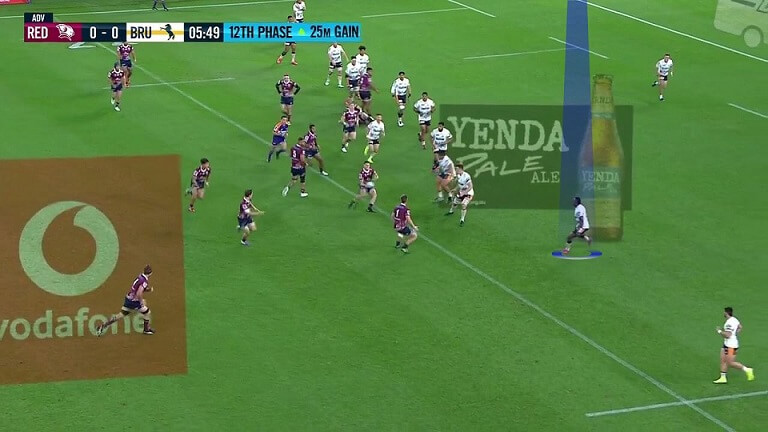On occasion heavily criticised, on occasion praised, the quality of attacking play during Super Rugby AU has been both interesting and quite divisive.
The clear steps teams have made on Defence has been huge. A return to the values of the 90’s and early 00’s when Aussie teams were some of the best defensive units around. If you’ve read Eddie Jones Biography he continually references how much defence was a focus of those great teams, the ’99 wallabies, the ’02 Brumbies etc…
It’s obviously been a huge focus. You still need to score more points than the opposition though so it’s also been good to see teams developing their attacking play over the last 10 weeks, even if it was not at the same rate.
It’s not always worked, but the intent has been good and that’s an important thing
The intention in attacking play is rarely talked about but it’s a major key in how good an attacking side can be. It’s something we’ve seen the New Zealand sides demonstrate time and time again and I don’t mean simply scoring tries (which is a given) but more the knowledge of where you’re going to stress the defence, where that line break is coming from and how you’re going to manufacture it?
There are a multitude of ways to do this, strike plays, phase maps/patterns, it’s what suits your teams talents best.
Ahead of the Super Rugby AU final I wanted to go back to the last Reds vs Brumbies game and look at the two teams attacking play.
From an analytical viewpoint it’s a good game to look at we saw two teams attacking with genuine intent, not just “heads up, let’s have a look”. One team nailed it the other, not so much but the two teams that took to the field knew exactly what they wanted to do and how they were going to try and do it.
That’s a great thing because over the course of Super Rugby AU that hasn’t always been evident to my eyes.
Some of that has been down to the new kicking laws, which on occasion has been awesome but has also lead to some pretty aimless kicking as teams struggle to find the best way to use them to their advantage.
Regardless, back to the main focus, attack.
We can actually sum both teams attacking play up in two quick sentences.
The Brumbies Started Deep and Stayed Deep. The Reds Executed on the tackle line.
I want to look at Liam Wright’s try in this game I think it’d be good to go through the Brumbies first attack as I think the contrast in how the teams set out to attack was very interesting.
The Brumbies Deep Attack
Playing deep isn’t an issue if it serves a purpose.
In this instance the Brumbies wanted to play a “wide wide” pattern that would allow them to attack the Reds defence where it is thinnest.
Brumbies win a free kick at the scrum. White immediately taps and goes to the midfield.
Perhaps a better option here would have been for White to pass the ball back to Samu who was on the mark and looking for the ball, so he could have gone early, or tap and go himself to get some yards.
Instead he plays an ambitious pass and it’s a great pick up by Simone but straight away we know Wright isn’t in a position to create the extra man on the chase around even without the quick tap so at best it’s a man on man attack.
This is not a strike move this purely a launch play designed to get the ball the edge and eat up some easy yards.
Simone plays out the back to Kuenzle, but it’s very clear Kuridrani is some way off being a threat both wide and flat resulting in none of the Reds defenders being sucked in by him and Simone plays out the back.
The issue is the ball is just moving laterally (remember a key principle of Rugby is go forward with the ball).
While this isn’t such an issue at this point the depth of that point of execution does become as things played out through this move and the wider match.
O’Connor (JOC) and Stewart safe in the knowledge Kuridrani was a decoy start folding under and Petaia and Daugunu are able to just slide and track the ball.
The Brumbies were never too interested in fixing the Reds, the speed of the ball through the hands was what was important and has given Muirhead space to run in.
Again though, there is no support coming from deep and everyone is in front of him – which further adds weight to the idea this is all about getting the ball to the edge and turning the Reds players out to chase.
Muirhead makes some easy yards before he is dragged down.
This is schoolboy rugby and it’s effective.
From the recycle the Brumbies again use the deep alignment to go wide wide, with the first pod holding the inside defence just, White plays to Kuenzle who plays to Simone.
Here are where issues are starting to creep in. The first is look how lateral the running has become?
The second is the fact that Kuridrani when he receives the ball is almost 20m behind the gain line and all his support is either lateral or in front of him.
This is a different situation to Muirhead having no support in the previous phase as Kuridrani is in the middle of the pitch with defenders either side of him.
He does exactly the right thing and cuts back inside to try and find support.
It’s loose between Kuridrani and Simone but when it’s tidied up we see another wide attack set up with a 3-2 formation giving the Reds the impression the Brumbies will play the same side to the far touchline.
In fact the Brumbies however are reloading this near side and as White approaches he checks back to see who is defending short for the Reds. Having made his decision never looks right knowing he is attacking back this short side.
It works and but for a sliced chip kick by Wright trying to keep it in (perhaps a better option would have been to kick long and chase) the Brumbies may have well gone close.
Regardless this is clearly a mapped out sequence of play. The Brumbies are looking to go wide wide, eat up yards and then once in behind the Reds (over the gain line) bounce back to negate the Reds ability to regenerate line speed. Hopefully exploiting the thinning out defence they’ve created.
The sequence of play ends when the Brumbies return the clearance kick and give a penalty away for holding in.
Now here is the Reds first attack leading to Wright’s try.
The Anatomy of a Try.
The sequence starts with a messed up lineout but with the Reds first to react they are able to get straight across the gain line and set up their next phase on the front foot.
Throughout, keep a close look on how much the Reds push up and engage the tackle line, making defenders function under pressure. That allows them to force defenders into making decisions and stop them sliding out. In contrast the deep attack from the Brumbies allowed the defence to make many decisions safe from any form of pressure.
First of all look at how close to the tackle line the Reds carry unit is?
Secondly also note how close to that JOC is, this allows him to talk to the unit and also keeps him hidden away and as a very live option the Brumbies have to think about.
It’s a little detail but options is something the Reds do very well here.
Notice how close to the tacklers Salakaia-Loto gets the ball – again this serves two things.
The first is the Brumbies have to engage, they can’t drift off him.
Secondly it robs the Brumbies of momentum, they don’t have the time to generate the speed to facilitate a truly dominant tackle and even though Salakaia-Loto doesn’t bust the line wide open he doesn’t get hit back, is able to spin through the contact and get to ground.
Also note how JOC doesn’t move at all, he just allows the pod to carry and he drifts across into position for the next phase.
Now options and decision making are a big thing in this Reds attack, note below JOC is already operating under pressure and has four options.
- Petaia on the short ball.
- Stewart sliding behind Petaia.
- Feauai-Sautia on a shorter late line
- The fourth option is a tunnel ball through the diamond to Campbell.
It’s also clear that there is an overlap with Feauai-Sautia hugging the far touchline while bottom of frame the Reds Pack is starting to reload this short side.
I think here perhaps a better options by Stewart than to turn the ball back inside was to draw and pass.
Reds recycle and to keep up the pace there are three quick phases keeping the Brumbies Defence sat on the gain line.
As the reds get to the edge JOC again takes the ball right up and whilst it’s a great step and go from Campbell to make the break it’s important to know how JOC and Campbell operating so close to the line force engages the Brumbies and reduces their chances to recover from any mistakes.
Great break from Campbell, and already we can see how the Reds flat (or as I prefer tackle line) attack is causing problems.
Now in the Red Zone the reds drop a little deeper.
This gives the Reds a little more space to re-set in but to combat this depth JOC gives a flat fast pass to Salakaia-Loto to re-generate speed.
In the next phase JOC again interests the defence but look at how many options he has under pressure.
He plays behind to Petaia who sees they are drifting too much and cuts in to stop the defence creeping up and across.
When the Reds finally come back notice how close to the gain line Tupuo is.
Also note how close to the tackle he gives the ball to McReight forcing all three defenders to bite in on him.
Which brings us nicely to the pay off.
As the ball is recycled look at how many options JOC has.
Inside ball, Tunnel ball through the back, two short runners and a floating chaser who can pop up wherever he feels.
JOC dummy cuts and then plays behind.
Which has pulls Kuridrani in, makes him sit back allowing Campbell to come around and then use a nifty change of pace to take him on the outside.
Wright knowing he’s totally isolated chances his arm at the block and Cambells gone with plenty of support to pass to when Kuenzle commits sending Wright over.
It’s a wonderful score. The offload from Campbell is great and understandably draws a lot of attention.
I think though more importantly we can see the control JOC had over the sequence and how the speed of McDermott at the ruck allowed the Reds to play close to that tackle line.
There is always a lot of talk about the Gain line in Rugby and it’s very important but the Tackle line is something that seldomly gets commented on but is intrinsic to what every team is trying to do.
The Reds throughout this sequence of play know what they need to do and how to beat the tackle line in each case.
As motivation goes, losing by 2 points courtesy of a final minute penalty is pretty good and one of the great things about competition Rugby is that it invariably throws up opportunities to right some (perceived) wrongs.
No matter what coaches may tell you, having a reason to win that is more than just “winning the game” is huge and leading into the Brumbies game the Reds will have been able to use that turn around in Canberra as a trigger for this performance ahead of their semi-final against the Rebels.
Heading into the Semi-Final, having not lost the Rebels and having beaten the tournament favourites was a great place to be, confidence was high and much of what we saw in the Brumbies game played out, a continuation of the Reds ability to engage defenders and preserve space for their pacey back three.
The Brumbies will certainly be a different proposition in the Final but perhaps the biggest factor will be the Reds having to back up aginst a fresh Brumbies.

